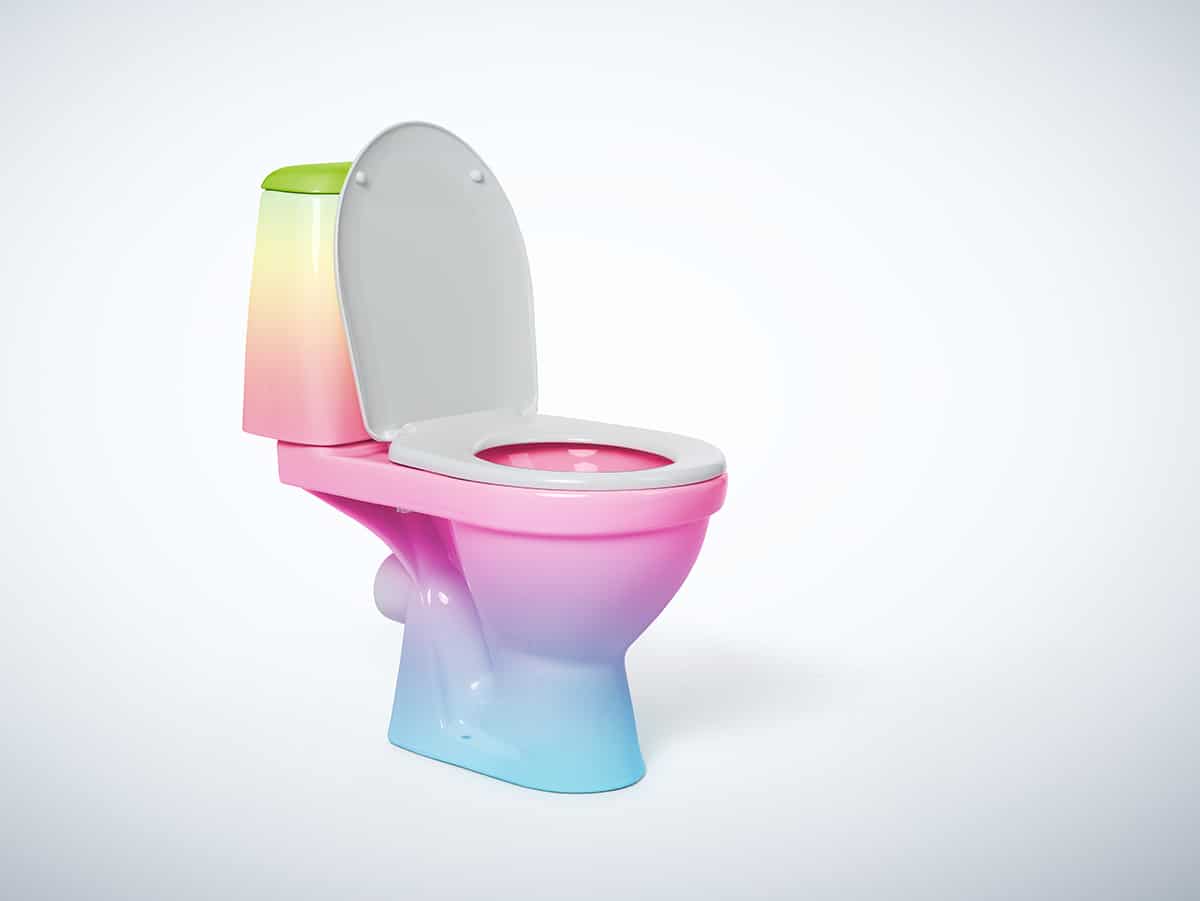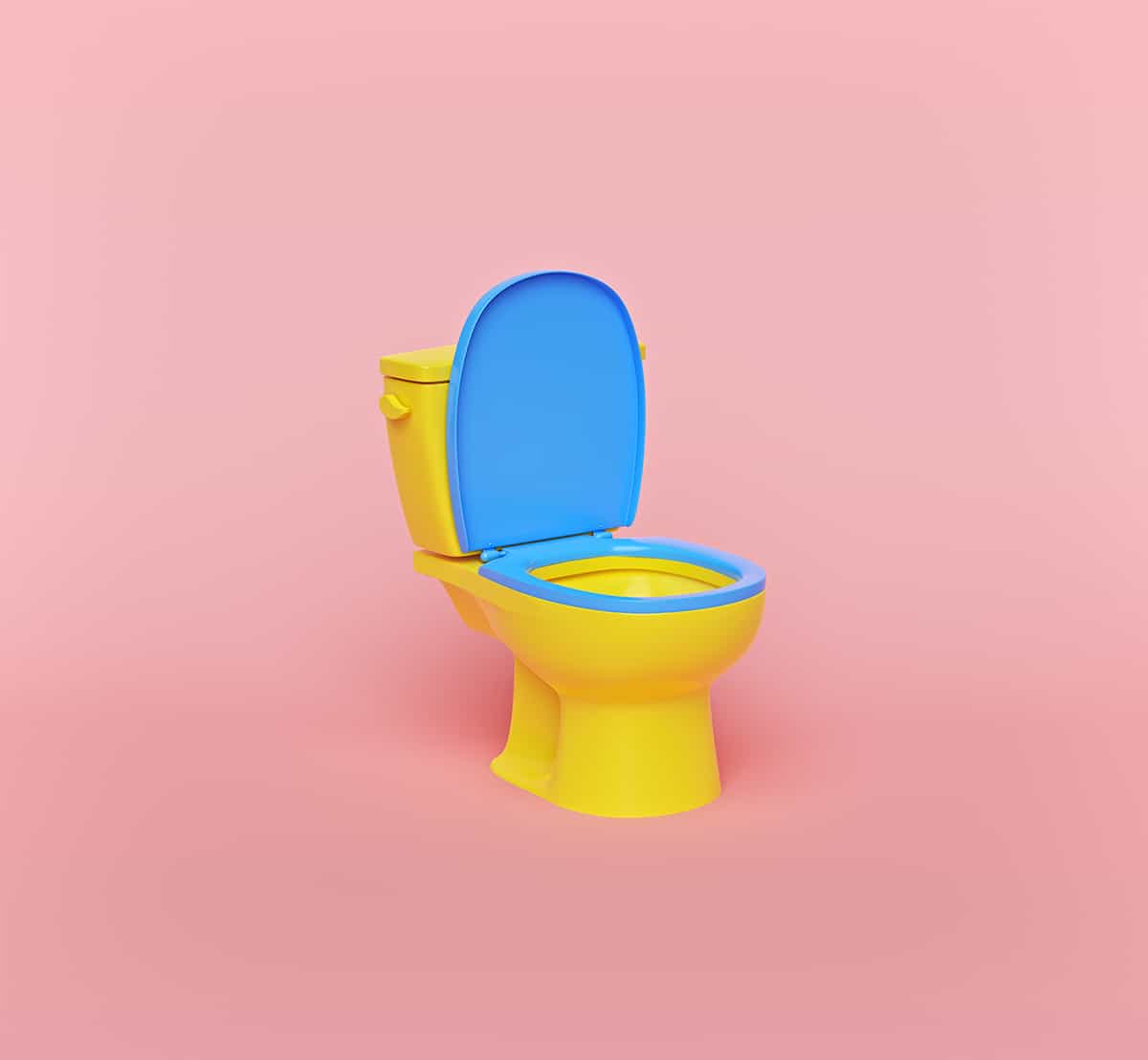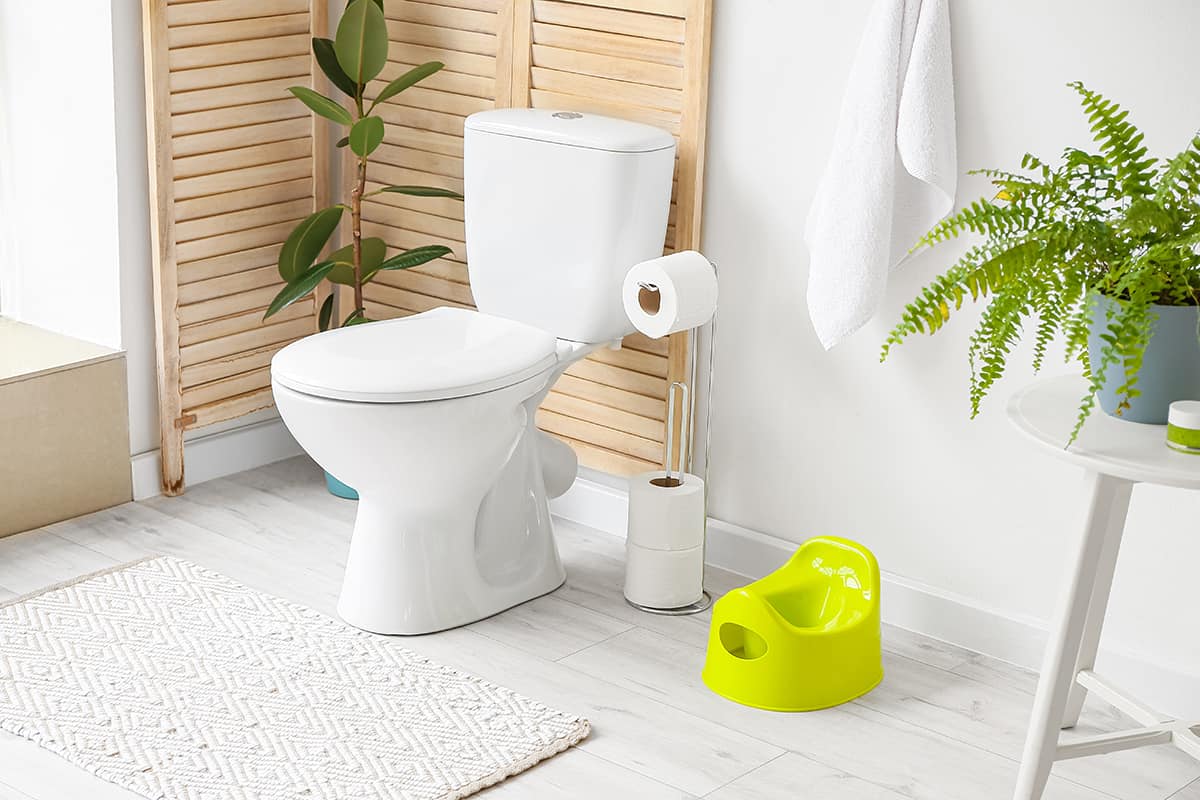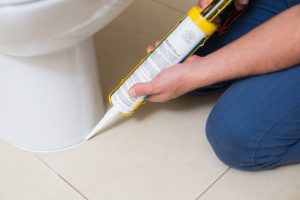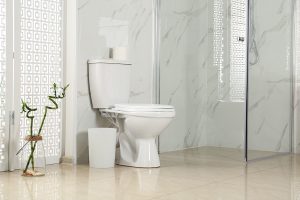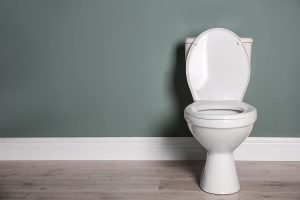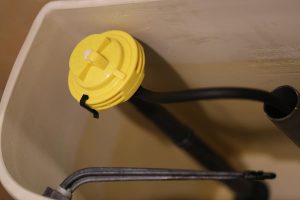The prospect of painting a toilet might seem unusual, but it’s actually something that more and more DIY enthusiasts are considering. Here we uncover how to paint a toilet and whether or not it’s worth it.
Can Toilets be Painted?
There are a few things in the home that cannot be painted. Just a few decades ago, homeowners were only applying paint to walls, ceilings, trim, and doors, but these days you can paint just about any object you can find in your home. Upcycling furniture projects are widely achieved with paint, and it’s no longer considered that unusual to paint fabric items in the home, such as upholstered chairs or roller blinds.
Spray paint designed for use in the home has further broadened the boundaries of items that can be painted. You may have seen examples of painted plant pots, painted lampshades, and painted baskets. But have you ever considered painting your toilet? While painting bathroom fixtures might seem a little unusual, there are ways that you can achieve this if you wish.
Toilets are suitable for painting as long as you use the right type of paint and follow the necessary steps for preparing the toilet. As you might expect, painting a toilet is a little more involved than painting other items in the home because toilets receive quite a lot of wear and tear, are subjected to moist conditions, and get cleaned with abrasive cleaners much more than other home items.
Why Paint a Toilet?
If you have bought a home which is quite dated, then you may have a bathroom suite that is in a color that doesn’t suit your taste or style. Common colors for toilets in the 1970s and 1980s were pale pink, avocado green, pale blue, and gray.
If you want a modern white toilet but your budget won’t extend to replacing your old-fashioned toilet just yet, you could save a few dollars by painting the toilet instead. Another reason why you might want to paint a toilet is if you want to make a statement in a bathroom with a bright and bold, colorful toilet.
If you want an eccentric look in your bathroom, a toilet in gold, black, neon pink, or even a glitter finish can be a good choice. While it is possible to buy a toilet in an unusual color, these tend to be quite expensive because they are specialist items. If you want to achieve a funky looking toilet on a budget, then painting it is probably your best option.
How to Paint a Toilet
- You can disconnect your toilet and move it to a workshop to carry out the upgrades, or you can paint it in situ. If painting in situ, be sure to use masking tape and drop cloths to protect the other parts of your bathroom from dust and paint.
- The first step in any good upcycling project is preparation. To prepare your toilet for painting, you need to thoroughly clean it. Use a strong antibacterial and antiseptic cleaning product and an abrasive scourer or scrubbing brush, and thoroughly clean the outside of the toilet. After this, wipe the toilet over with water to get rid of any trace of cleaning chemicals, and dry it clean with paper towels.
- Turn off the water supply to your toilet, and flush the toilet to empty the bowl. Now, thoroughly clean and dry the inside of the bowl.
- Next, you’ll need to sand down the toilet to take the shine away from the surface. This will help to ensure the paint has a surface it can stick well to. Use rough grit sandpaper over the entirety of the toilet, including inside the bowl. Wipe away the fragments of dust and dispose of them so that they don’t cause any blockages in the toilet.
- Now you can prime the surface of the toilet with an acrylic primer, which will provide a good base for your chosen paint.
- After allowing the primer to dry, apply an epoxy paint designed to be used on appliances. This will stand up better to moisture than any other type of paint, giving you the best chance of a painted toilet that lasts. Add several coats as directed by the paint manufacturers, allowing sufficient drying time between each coat.
- Ensure the paint is fully hardened before turning the water back on and using the toilet.
Should You Paint a Toilet?
Just because you can paint a toilet, it doesn’t mean that you should. Painting a toilet requires time and patience, as well as specific types of paint and equipment that could end up costing you more than it would cost just to buy a new toilet. If you are painting an old-fashioned toilet in white to make the bathroom look more modern, it’s highly likely that you would be able to replace the toilet with a brand new white one for the similar amount of money that it would cost to paint your old toilet.
This is because basic white toilets can now be picked up really inexpensively from hardware stores and big box stores; in many cases, you should be able to pick one up for around $100 if you aren’t fussy about the style or shape of the toilet. Replacing an old-fashioned toilet with a new model will not only update the look of your bathroom, but the new toilet will also run more efficiently than an old toilet, which could save you money in water bills.
If you want to paint your toilet in a bright color for a quirky bathroom, then painting it is more likely to be the most cost-effective option, because custom-made or unusual toilets can be hundreds or even thousands of dollars. This means that even after paying for specialist paint, you should be saving yourself quite a bit of money by painting the toilet rather than buying a new one.
Before you paint your toilet, consider how it is going to affect the value of the house in the event that you come to sell the property. Neutral colors are a much safer bet in homes when they are listed for sale, and toilets in unusual colors could put off a lot of buyers.
The longevity of the actual paint itself is something else you should consider before painting a toilet. Even the most hard-wearing paint can start to chip or peel away over time with heavy use. A toilet in a guest bedroom en-suite is likely to get much less frequent use compared with a toilet in a family bathroom, so a painted toilet in this scenario might stand up to time better than a toilet that is regularly used.
Abrasive cleaners and chemical detergents can wear down a painted toilet, causing it to lose its shine or breaking down the paint so that it flakes off. Unfortunately, the fact that toilets do need to be cleaned regularly with harsh cleaners means that they aren’t the best choice of object for painting. Take extra care when cleaning a painted toilet, or you may end up with a bathroom that looks worse than it did in the first place.
